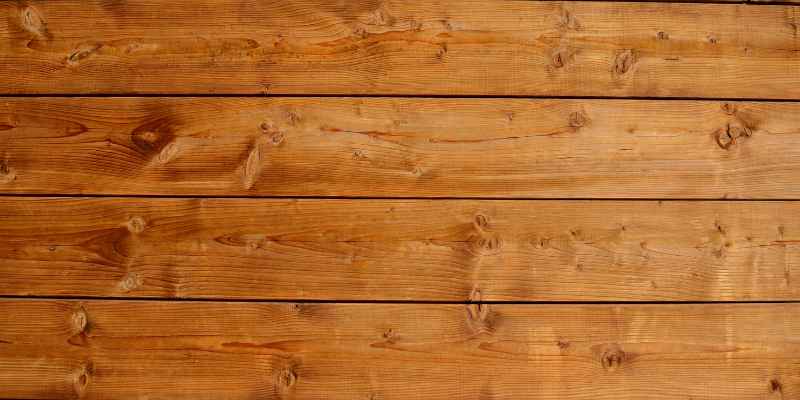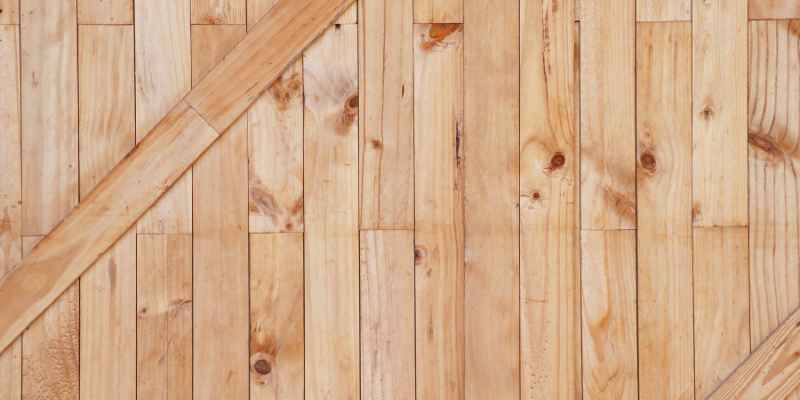Yes, pine is classified as a hardwood due to its durability and strength. It is commonly used in furniture and construction projects for its versatile properties.
With its distinctive grain pattern and light color, pine offers a natural and warm aesthetic to any space. Additionally, pine is relatively easy to work with, making it a popular choice among DIY enthusiasts. Whether you are looking to build a sturdy piece of furniture or enhance your home’s interior, pine is a reliable option that combines beauty and strength.
Its affordability compared to other hardwoods also makes it a practical choice for many.
Is Pine Technically A Hardwood?
Pine is a popular type of wood used in various construction and woodworking projects. When discussing wood, the terms “hardwood” and “softwood” are often thrown around. But where does pine fit in? Is pine technically a hardwood? Let’s explore the subject by understanding pine’s common classification and the distinction between hardwoods and softwoods.
Pine’s Common Classification
Pine is commonly classified as a softwood. This classification is primarily based on its physical characteristics and the way it grows. Softwoods come from coniferous trees like pines, spruces, and firs. These trees tend to bear cones and have needle-like leaves. Their wood is generally lighter, less dense, and more porous compared to hardwoods.
The Distinction Between Hardwoods And Softwoods
The classification of hardwoods and softwoods is not solely based on their actual hardness or softness. Instead, it relates to the type of tree they originate from. Hardwoods typically come from deciduous trees such as oak, mahogany, and maple. They are known for their dense and durable nature, making them ideal for furniture, flooring, and other high-quality applications.
On the other hand, softwoods like pine belong to coniferous trees. These woods are generally less dense and are more likely to contain knots and resin pockets. Due to their natural characteristics, softwoods are often used for construction, framing, and outdoor projects.
It’s worth noting that while pine is softer than many hardwoods, it still offers valuable qualities. Pine wood is relatively lightweight and easy to work with. It has a distinct grain pattern that adds character to woodworking projects. The softness of pine also makes it ideal for carving and shaping, making it a favorite among woodworkers.
In conclusion, although pine falls under the softwood category, it is essential to remember that hardwoods and softwoods are not always defined by their actual hardness. The classification is based on the type of tree they originate from and their corresponding physical properties. Understanding these distinctions can help you make informed decisions when selecting wood for your next project.

The Factors That Affect Pine’s Hardness
Pine is a popular choice when it comes to wood for various applications. However, its hardness can vary depending on a few key factors. Understanding these factors can help you make informed decisions when using pine in your projects. Let’s explore the factors that influence pine’s hardness:
Growth Rate And Density
Pine trees come in different species, and the growth rate and density of the wood can significantly affect its hardness. Typically, slower-growing pines tend to have denser wood, which translates to greater hardness. On the other hand, faster-growing pines may have lighter and softer wood. It’s important to consider the growth rate and density when choosing pine for furniture, flooring, or other applications where hardness is a crucial factor.
Moisture Content
The moisture content of pine wood also plays a significant role in determining its hardness. When pine wood has high moisture content, it tends to be softer and more prone to denting and scratching. On the contrary, pine with low moisture content is usually harder and less susceptible to damage. Properly dried and seasoned pine, with a lower moisture content, is generally preferred for applications that require increased durability and longevity.
Environmental Conditions
Pine wood’s hardness can be influenced by the environmental conditions in which the tree grows. Factors like temperature, humidity, and geographical location can all impact the final hardness of the wood. Pine trees that grow in colder regions tend to have harder wood, whereas those in warmer and more tropical climates may have comparatively softer wood. Therefore, it’s important to consider the environmental conditions when assessing the hardness of pine.

Comparing Pine To Other Hardwoods
When it comes to hardwoods, pine is often a topic of debate. Many people wonder whether pine can be considered a hardwood due to its softer and less durable nature in comparison to other hardwood species. In this section, we will compare pine to other hardwoods, discussing the species known for durability as well as the pros and cons of using pine as a hardwood substitute.
Hardwood Species Known For Durability
Hardwood species known for their exceptional durability include oak, maple, mahogany, and walnut. These woods are renowned for their strength and ability to resist wear and tear over time. Oak, for instance, is a popular choice in flooring due to its density and resilience.
Maple, on the other hand, is highly regarded for its resistance to scratches and dents, making it an excellent choice for furniture and cabinetry. Mahogany, with its beautiful reddish-brown hue, is not only durable but also highly resistant to moisture and rot, making it ideal for outdoor furniture. Lastly, walnut, known for its deep, rich color, is valued for its durability and resistance to warping.
Pros And Cons Of Using Pine As Hardwood Substitute
While pine may not be as durable as other hardwoods, it does have its advantages when used as a hardwood substitute. Let’s explore the pros and cons:
Pros:
- Pine is relatively less expensive than many hardwood alternatives, making it more affordable for those on a budget.
- It offers a unique, rustic appeal due to its natural knots and grain patterns, which can enhance the aesthetics of furniture or flooring.
- Being easy to work with, pine is a preferred choice for DIY projects, as it can be easily cut, shaped, and assembled.
- Pine is also a renewable resource, making it an environmentally-friendly option for those concerned about sustainability.
Cons:
- One of the major downsides of pine as a hardwood substitute is its susceptibility to scratches and dents. It is not as resistant to wear and tear as other hardwoods, which may limit its lifespan.
- Pine is also more prone to warping and shrinking when exposed to changes in humidity and temperature.
- Compared to hardwoods like oak or maple, pine can be less dense, meaning it may not provide the same level of strength and stability.
While pine may not have the same durability as other hardwoods, it can still serve as a suitable option in certain situations. If cost, aesthetics, or ease of use are important factors for you, considering pine as a hardwood substitute might be worth exploring.
Conclusion
Pine is a highly versatile and widely used wood in various industries due to its unique properties. While it falls under the category of softwood, it possesses qualities that make it a suitable option for both indoor and outdoor applications.
Its durability, affordability, and aesthetic appeal make it a popular choice among homeowners and builders alike. So, if you are considering using pine for your next project, don’t hesitate to do so as it can definitely meet your requirements.


